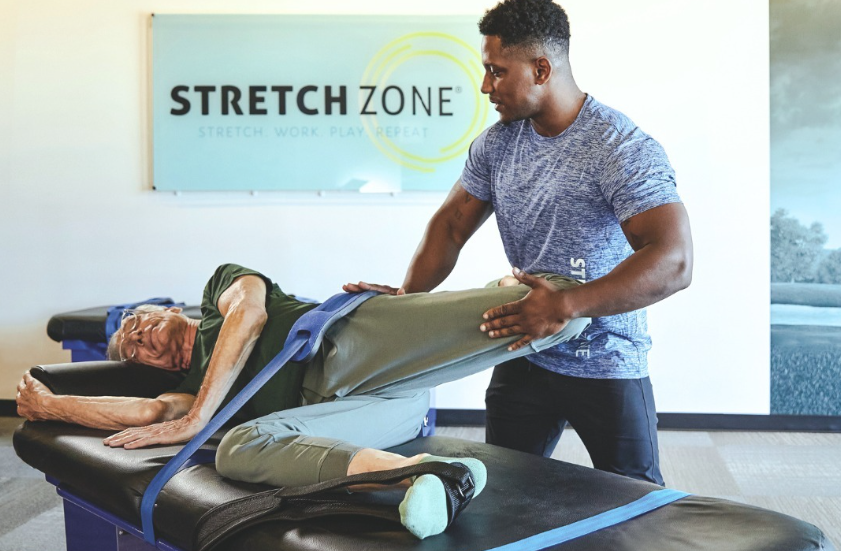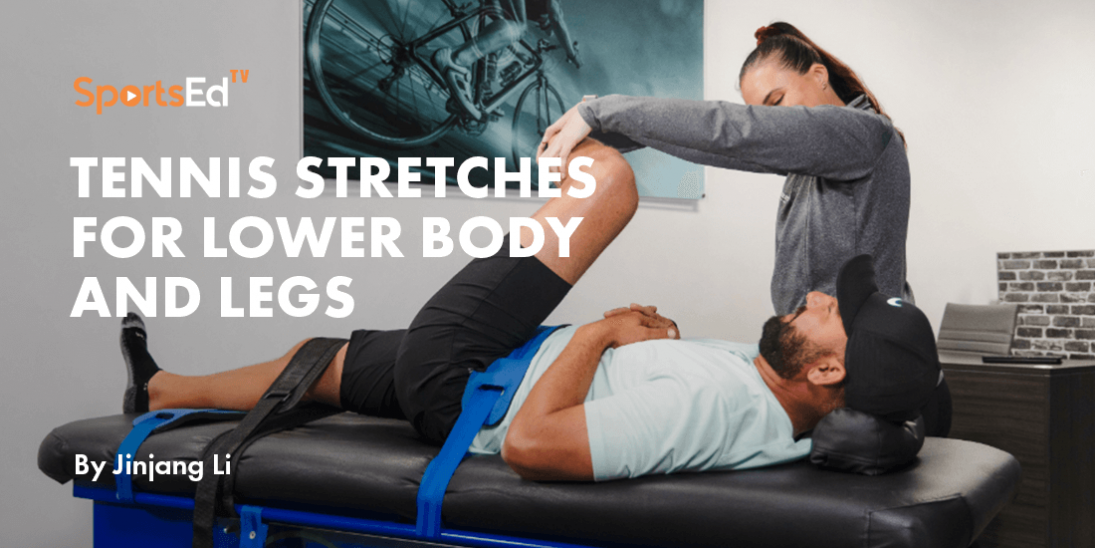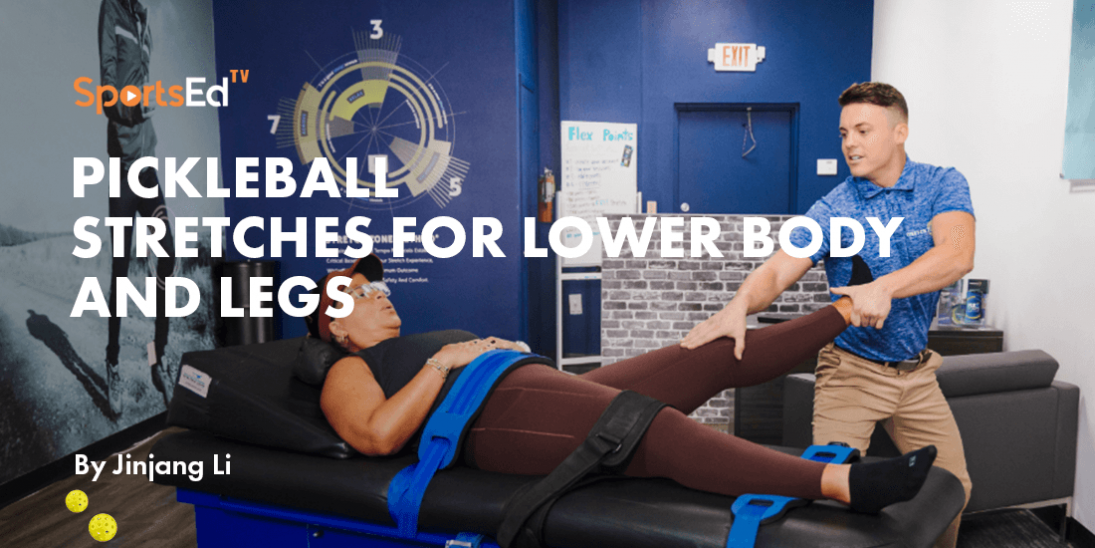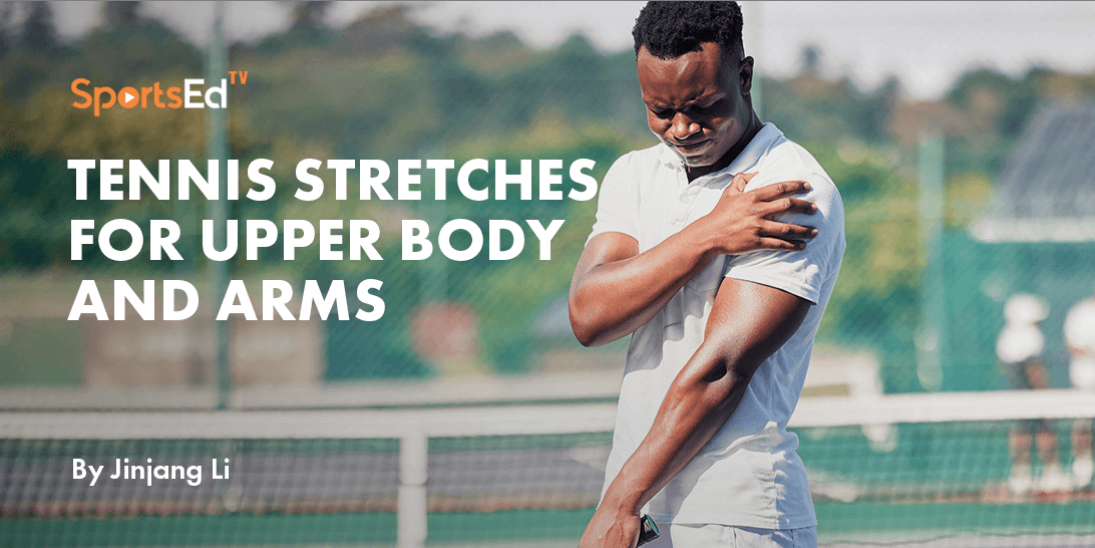Golf, Pickleball, Strength And Conditioning, Stretching, Tennis
Welcome and thanks for visiting...

Unlock Your Body's Potential: The Benefits of Practitioner-Assisted Stretching
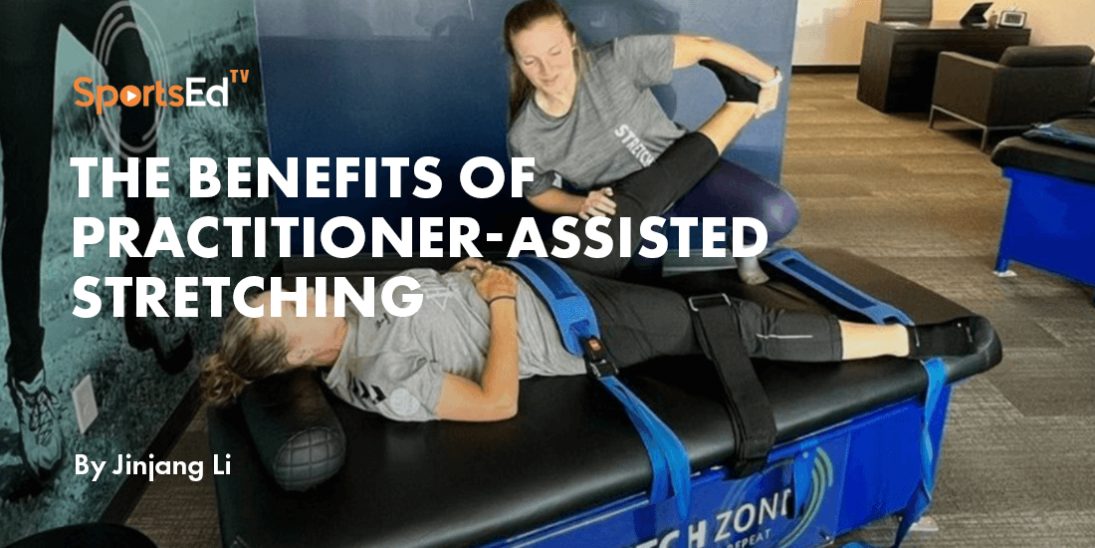
Are you tired of feeling stiff, tight, and restricted in your movements? Assisted stretching might be the game-changer you've been searching for. Whether you're an athlete looking to improve performance or simply want to enhance your overall well-being, incorporating assisted stretching into your routine can unlock your body's potential in ways you never thought possible.
Assisted stretching is a specialized technique that involves a trained professional guiding you through a series of stretches to target specific muscles and improve flexibility. Unlike traditional stretching, where you rely solely on your own strength, assisted stretching allows for a deeper, more effective stretch that elongates and releases tension in your muscles.
The benefits of assisted stretching are numerous. Not only can it improve your flexibility and range of motion, but it can also help reduce muscle soreness, prevent injuries, and enhance athletic performance. Additionally, assisted stretching promotes better posture, relieves stress, and improves blood circulation, resulting in a healthier, happier body.
So, whether you're looking to optimize your physical performance or simply want to feel more balanced and relaxed, unlocking your body's potential through assisted stretching is a smart choice. Discover the remarkable benefits of assisted stretching and experience the transformative power it can have on your well-being.
What is practitioner-assisted stretching?
Practitioner-assisted stretching is a specialized technique that involves a trained professional guiding you through a series of stretches to target specific muscles and improve flexibility. Unlike traditional stretching, where you rely solely on your own strength, assisted stretching allows for a deeper, more effective stretch that elongates and releases tension in your muscles.
Practitioner-assisted stretching works by applying gentle pressure to your muscles, helping them relax. The practitioner may use their hands, body weight, or props to assist in the stretching process. This method allows for a more controlled and precise stretch, ensuring that the right muscles are targeted and that you are not overstretching or risking injury.
How does practitioner-assisted stretching work?
The benefits of practitioner-assisted stretching are numerous and can have a significant impact on your overall well-being. Improved flexibility and range of motion are among the most notable advantages. As the muscles are stretched, your body becomes more supple, allowing for a greater range of motion in daily activities and physical pursuits.
Additionally, it can help reduce muscle soreness and increase flexibility. By increasing blood flow to the muscles and promoting the release of lactic acid, stretching aids in the recovery process, reducing post-workout muscle soreness and decreasing the risk of strains and sprains.
Another benefit of practitioner-assisted stretching is its ability to enhance athletic performance. By improving flexibility and range of motion, you can optimize your body's ability to perform various movements and techniques, leading to better sports performance.
Furthermore, it promotes better posture by targeting specific muscles that contribute to postural imbalances. By elongating tight muscles and strengthening weak ones, assisted stretching helps align the body more efficiently, resulting in improved posture and reduced discomfort.
Stretching also has a positive impact on mental well-being. By facilitating the release of tension and stress, this technique promotes relaxation and reduces anxiety. Additionally, the increased blood circulation during stretching can improve overall mood and enhance your sense of well-being.
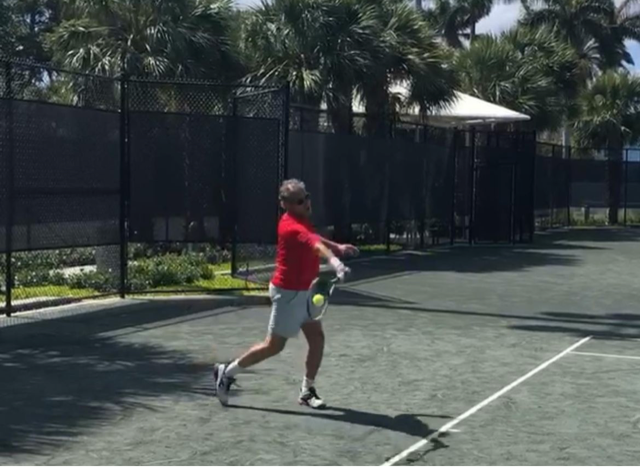
Benefits of practitioner-assisted stretching
While traditional stretching is beneficial, assisted stretching offers several advantages that make it a more effective and efficient method. Traditional stretching relies on your own strength and flexibility, which can sometimes be limited, leading to suboptimal results.
In contrast, practitioner-assisted stretching allows for a deeper and more controlled stretch. With the assistance of a trained professional, you can achieve a more effective stretch that targets specific muscles and areas of tension. This targeted approach ensures that you are getting the most out of each stretch, maximizing the benefits for your body.
Additionally, practitioner-assisted stretching offers a safer alternative to traditional stretching. The guidance of a practitioner helps prevent overstretching and reduces the risk of injury. They can adapt the stretches to your individual needs and limitations, ensuring that you are performing the exercises correctly and safely.
Assisted stretching is beneficial for individuals of all fitness levels and ages. Whether you are an athlete looking to improve performance, someone recovering from an injury, or simply seeking to enhance your well-being, assisted stretching can help you unlock your body's potential.
Athletes can benefit from assisted stretching by improving their flexibility and range of motion, which can enhance their performance and reduce the risk of sports-related injuries. Individuals recovering from injuries or surgeries can use assisted stretching as part of their rehabilitation program to regain mobility and flexibility.
Moreover, desk-bound individuals who spend long hours sitting can also benefit from assisted stretching. Sedentary lifestyles often lead to muscle imbalances and postural issues. Assisted stretching can help alleviate these problems by targeting specific muscles and restoring balance to the body.
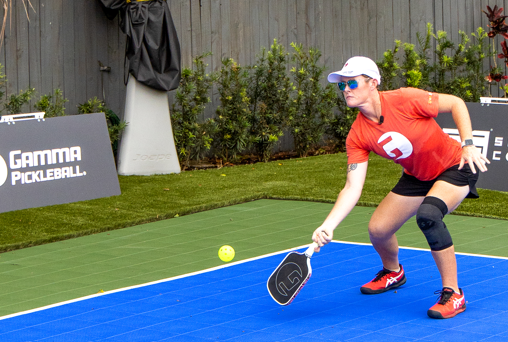
Incorporating practitioner-assisted stretching into your fitness routine
Assisted stretching is not limited to athletes or individuals with specific fitness goals. It is a practice that can benefit people of all ages and fitness levels. Whether you're a professional athlete looking to enhance your performance or someone who spends long hours sitting at a desk, assisted stretching can be a valuable addition to your wellness routine.
For athletes, assisted stretching can help improve flexibility and range of motion, leading to enhanced performance and reduced risk of injury. It can also aid in post-workout recovery by reducing muscle soreness and promoting faster healing.
Individuals with sedentary lifestyles can also benefit from assisted stretching. Spending long hours sitting or being in one position can lead to muscle imbalances and tightness. Assisted stretching can help counteract these effects by targeting specific muscle groups and releasing tension, resulting in improved posture, reduced pain, and increased overall well-being.
Assisted stretching is also beneficial for individuals who have limited mobility due to aging or injury. By working with a trained professional, they can safely improve their flexibility and regain some of their lost mobility.
Finding a qualified assisted stretching practitioner
If you're ready to unlock your body's potential through assisted stretching, there are several ways you can incorporate it into your fitness routine. Here are a few tips to help you get started:
- Find a qualified assisted stretching practitioner: Look for a trained professional who specializes in assisted stretching. They should have the knowledge and experience to guide you through the stretches safely and effectively.
- Set realistic goals: Determine what you hope to achieve through assisted stretching. Whether it's improving flexibility, reducing muscle soreness, or enhancing athletic performance, having clear goals will help you stay motivated and track your progress.
- Create a routine: Dedicate a specific time each day or week to perform your assisted stretching routine. Consistency is key to seeing results, so make it a priority in your schedule.
- Listen to your body: Pay attention to how your body feels during and after the stretches. If something feels uncomfortable or painful, communicate with your practitioner and adjust the intensity or technique accordingly.
- Supplement with other forms of exercise: Assisted stretching can be even more effective when combined with other forms of exercise, such as strength training or cardiovascular workouts. This comprehensive approach will help you improve your overall fitness and well-being.
Remember, assisted stretching is not a one-size-fits-all practice. Each individual is unique, and what works for one person may not work for another. It's essential to listen to your body, communicate with your practitioner, and make adjustments as needed.
Some insights from research on assisted stretching
Age-related declines in flexibility can hinder mobility and daily activities for older individuals. Research has shown that improved flexibility can enhance their performance in daily activities and overall quality of life. This study focused on a unique approach called active-assisted (AA) stretching, a form of proprioceptive neuromuscular facilitation (PNF), as a means to boost flexibility and functional performance.
The AA flexibility program demonstrated a positive impact on mobility, emphasizing the correlation between Range of Motion (ROM) and functional performance. Research by Gajdosik and others indicated increased gait speeds and agility after stretching, mirroring our findings. The program's effectiveness in improving gait speed can be attributed to enhanced stride length and muscle contractile speeds due to AA stretching.
The recent surge in assisted stretching centers like Stretch Zone offers a promising avenue for enhancing wellness routines. Amy McDevitt, PT, DPT, an associate professor at CU Anschutz, acknowledges the growing interest in mindful, low-intensity activities that promote health and wellness. Assisted stretching, akin to yoga and massage therapy, taps into this trend by delivering deeper, end-range stretches safely with the aid of trained professionals. However, McDevitt underscores the importance of ensuring employees at such centers are properly trained to prevent the risk of overstretching muscles. The timing of stretching is also crucial, with experts recommending deep stretching post-workout rather than before, as it minimizes the potential for tissue damage. While costs are comparable to other hands-on therapies, assisted stretching can provide a therapeutic and relaxing experience, making it a valuable addition to one's wellness routine.
While practitioner-assisted stretching is generally safe and beneficial, it's important to take necessary precautions. Here are a few considerations:
- Communicate any injuries or health conditions: Before starting assisted stretching, inform your practitioner about any existing injuries, health conditions, or physical limitations. They can tailor the stretches to accommodate your needs and prevent any further harm.
- Avoid overstretching: It's crucial not to push yourself beyond your limits or allow the practitioner to stretch you too aggressively. Overstretching can lead to muscle strains, sprains, or other injuries. Always communicate your comfort level and listen to your body.
- Choose a qualified practitioner: Opting for a trained and experienced professional reduces the risk of injury. Avoid self-stretching without proper guidance, as it may not be as effective and can potentially lead to incorrect techniques or overstretching.
- Gradually increase intensity: Just like any other fitness activity, start with gentle stretches and gradually increase the intensity over time. This allows your body to adjust and adapt to the new demands, reducing the risk of injury.
- Respect your body's limits: Assisted stretching should never be painful. If you experience sharp or intense pain during a stretch, communicate with your practitioner and stop immediately.
By practicing assisted stretching with caution and under the guidance of a qualified professional, you will maximize the benefits.





